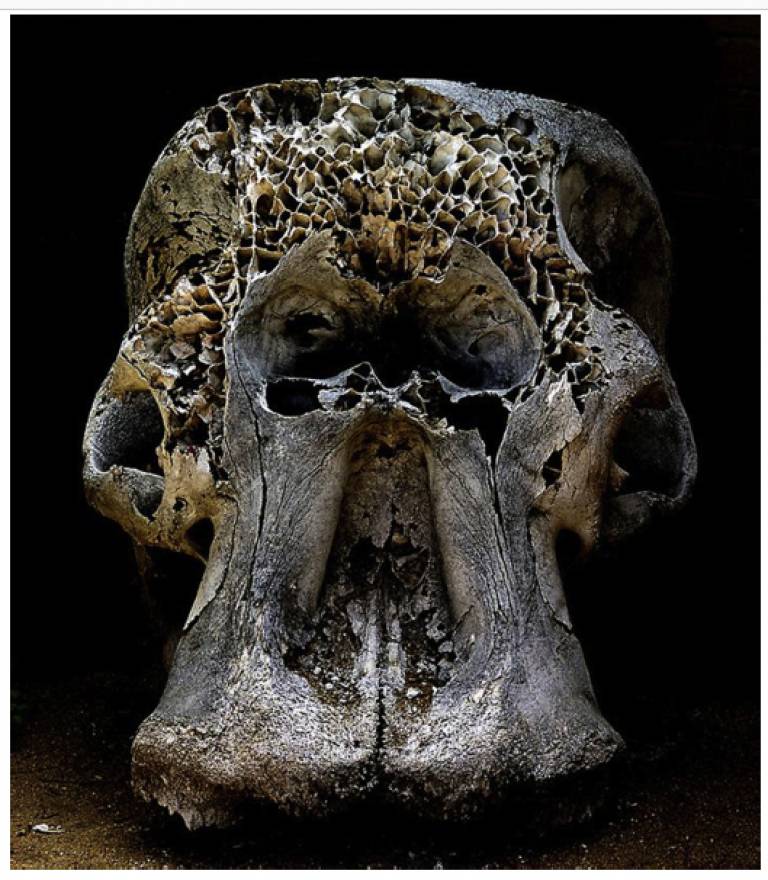Archaeologists suggest that hominins exploited Elephant skulls for more than just their brains
29 May 2016
The presence of elephants, and specifically of elephant head remains, is well demonstrated in many Paleolithic sites in Europe, Africa, and Asia.
 However, the possible mechanisms for the exploitation of this enormous body part are rarely discussed, and it is often suggested that elephants' heads were exploited specifically for the extraction and consumption of the brain. In this paper, we discuss the nutritional potential that lies within elephants' heads as implied by ethnographic and zoological literature, and present archaeological evidence from Paleolithic sites for the exploitation of proboscideans' heads. The data show that the prevailing view should be re-evaluated, and that the nutritional potential within the elephant's head extends far beyond the brain. The scientists suggest that organs such as the temporal gland, the trunk, the tongue, the mandible and the skull itself were exploited routinely as an integral part of early humans' diet. The nutritional potential of the elephant head provides a parsimonious explanation for the investment early humans put into transporting and exploiting this specific body part at open-air sites but particularly at cave sites, and serves as a significant beacon in understanding Paleolithic human behavior in relation to proboscidean remains.
However, the possible mechanisms for the exploitation of this enormous body part are rarely discussed, and it is often suggested that elephants' heads were exploited specifically for the extraction and consumption of the brain. In this paper, we discuss the nutritional potential that lies within elephants' heads as implied by ethnographic and zoological literature, and present archaeological evidence from Paleolithic sites for the exploitation of proboscideans' heads. The data show that the prevailing view should be re-evaluated, and that the nutritional potential within the elephant's head extends far beyond the brain. The scientists suggest that organs such as the temporal gland, the trunk, the tongue, the mandible and the skull itself were exploited routinely as an integral part of early humans' diet. The nutritional potential of the elephant head provides a parsimonious explanation for the investment early humans put into transporting and exploiting this specific body part at open-air sites but particularly at cave sites, and serves as a significant beacon in understanding Paleolithic human behavior in relation to proboscidean remains.
Not the brain alone: The nutritional potential of elephant heads in Paleolithic sites
Aviad Agam, Ran Barkai
DOI: 10.1016/j.quaint.2015.02.008
 Close
Close

